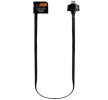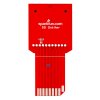Rlsbowhunt
5 year old buck +
I was wondering if anyone has or knows how to connect a cuddy link home camera to your home internet or wifi to have pics sent to your email at a app instead of using a cell cam.
The reason being is my home cam is set 20' from our home and most of the year I just pull the card daily and check the pics. I would like to be able to have the pics sent to my phone when we are gone for vacation or out of town, mainly for property surveillance while we're gone.
So long story short, does anyone know how to connect a cuddling to internet and get pics sent to phone? Thanks!
The reason being is my home cam is set 20' from our home and most of the year I just pull the card daily and check the pics. I would like to be able to have the pics sent to my phone when we are gone for vacation or out of town, mainly for property surveillance while we're gone.
So long story short, does anyone know how to connect a cuddling to internet and get pics sent to phone? Thanks!



